Animal Discovery Den
Discover the Den
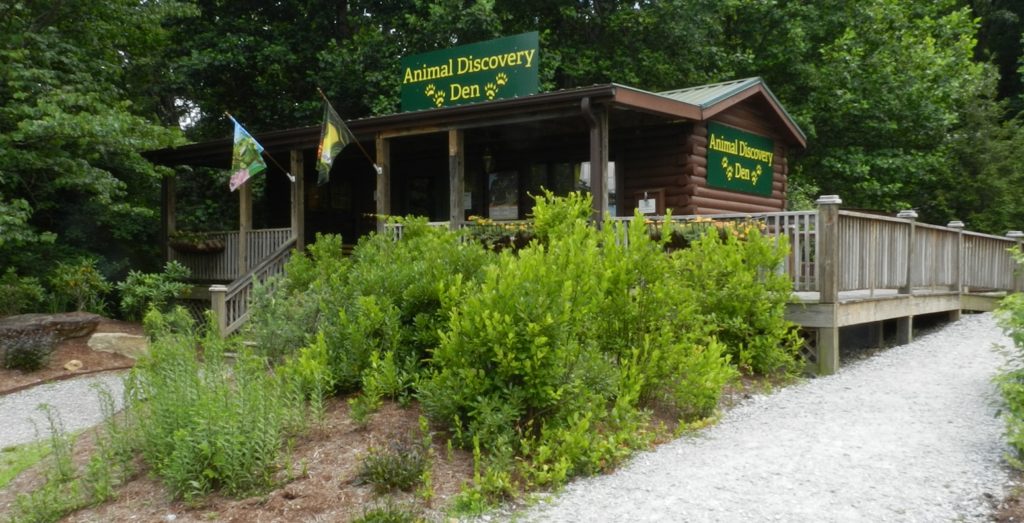
See the Park differently – stop by our Animal Discovery Den to learn about the wildlife ambassadors that call the Park home. All the animals you’ll meet are unreleasable, meaning they cannot be returned to their wild homes. Wild animals should stay in their natural habitats whenever possible, but sometimes injury, captive breeding, or over reliance on humans makes it hard for them to survive on their own.
In the Den, you’ll get the chance to see where some of our animal educators live when they aren’t busy teaching programs and be able to pick up some new animal facts you might not know. After you’re done exploring indoors, venture out back to see our resident opossums and groundhog in their exhibits. You’ll also enjoy our beautiful Lepidoptera (butterfly & moth) garden with dozens of native plant species meant to support our pollinators.
Want a more personal experience? Join us for an Animal Encounter program. Meet the animals and hear how our ambassadors came to live with us and more about the habitat, adaptations and natural history of their kind. These interactive programs are fun for the whole family and are offered various times throughout the year including summers and holidays. Check out our events calendar for more details.
Our Animals
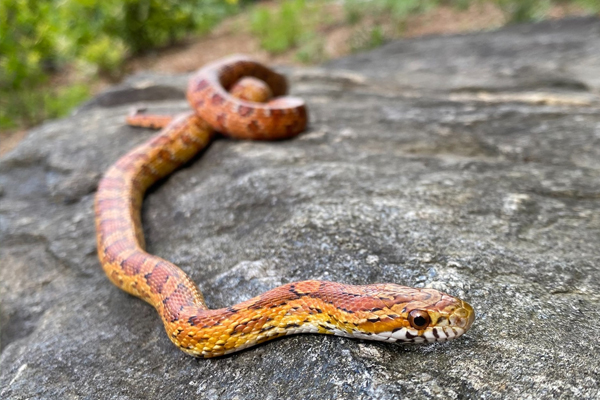
Sol and Apollo: Corn Snakes
You may not have heard us called this before, but Corn Snakes are also known as Red Rat Snakes. We are very similar to the Black Rat Snake with whom we share our home, but we don’t get quite as long. Folks believe we got the name Corn Snake because we’re often found hanging out in Corn Cribs where lots of mice can be found eating corn. Did you notice that one of us has a normal color pattern while the other is an albino? Albino Corn Snakes are popular in the pet trade.
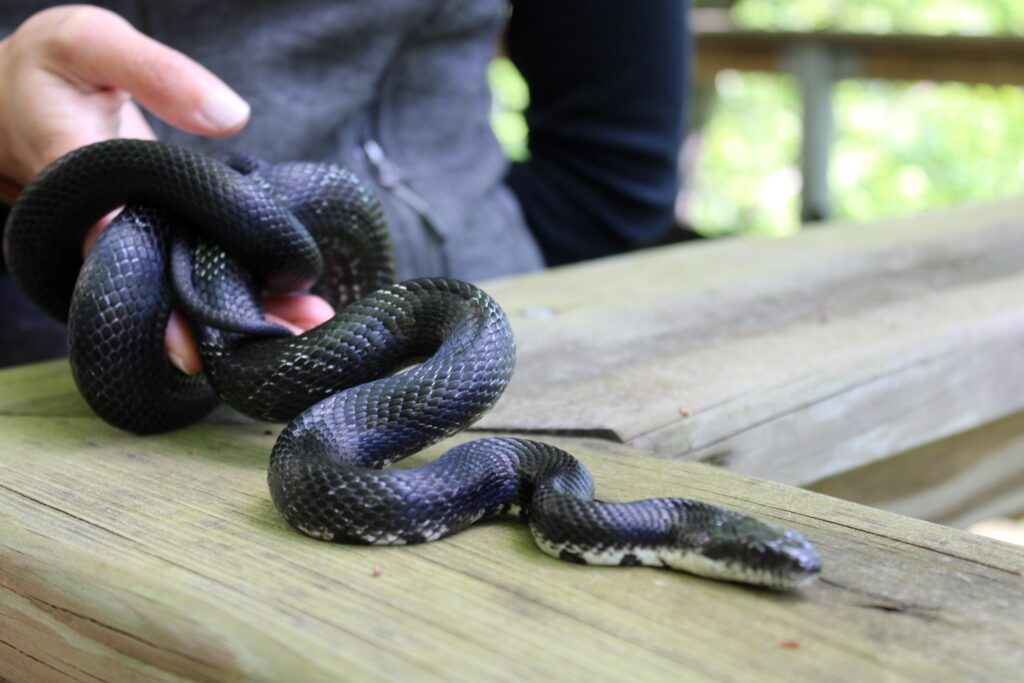
Steve: Black Rat Snake
I am one of the most common snakes you can find in western North Carolina, and here in the park. I am named after my favorite food – rats! I am a great snake to have around your yard (if I do say so myself), because I will keep away pesky rodents that can cause diseases to humans and pets. I am non-venomous, instead using constriction to catch my prey. Can you see the pattern on my belly? Juvenile Black Rat Snakes are covered in a black and gray pattern which fades as we grow up. I am a cousin of the Red Rat Snakes or Corn Snakes, who I share my home here with.
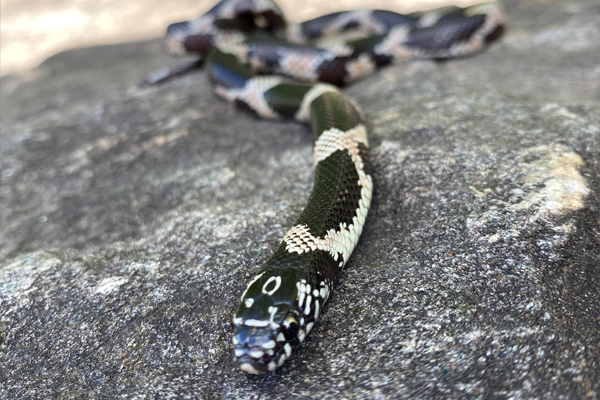
Mufasa: Eastern King Snake
Have you heard of a snake that eats other snakes? Well, that’s me, the Eastern King Snake! I am black and have yellow bands in a chainlike pattern on my back. I am often called a Chain King Snake. In the wild I would eat anything I come across such as rodents, eggs, birds, lizards and yes, even other snakes including venomous ones like the Copperhead and the Timber Rattlesnake. You will often find me around farms, near a water source or in suburban areas. Sometimes when I get scared, I will rattle my tail like a rattlesnake to detour predators.
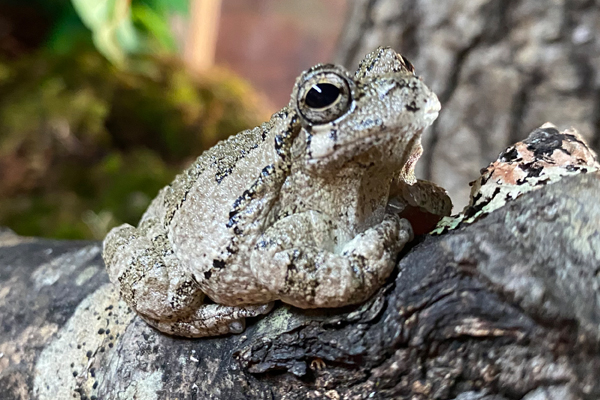
Copes Gray Tree Frog
Listen carefully and you may hear us chatting with each other. Copes Gray Tree Frogs are the most common species of tree frog in the mountains of Western North Carolina. We are normally found in vegetation or trees, especially around water sources. We like to come out from hiding at nighttime when we look for beetles, slugs, spiders and invertebrates to eat. Stop by and see if you can see us leaping around our exhibit!
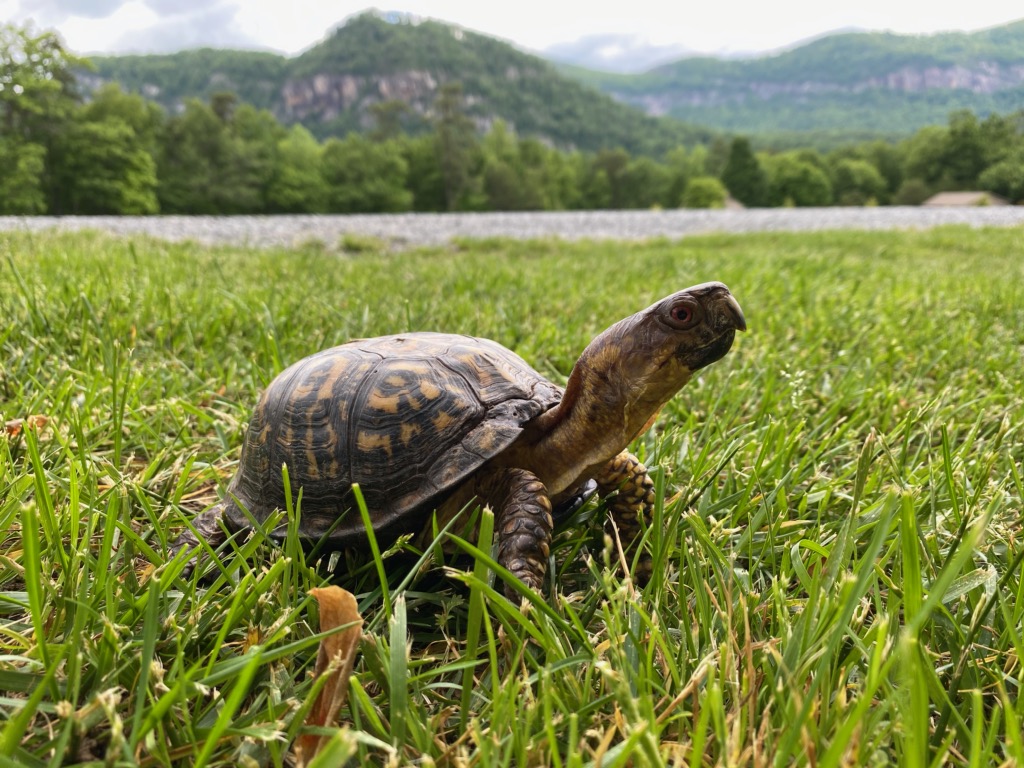
Mac, Lacey, and Waffle: Eastern Box Turtles
Yes, yes, it’s us – the longest living turtle in town! Nobody likes to brag, but when you’re the NC State Reptile and you can live up to 100 years, you’re kind of a big deal. Although you may not see turtles like me on your visit today, they’re probably not far from you. Eastern Box Turtles can be found all over these mountains, but you don’t want to move my friends unless they’re in danger. When we get our mind set on going in a direction, we have to keep going that way. You can help us get where we’re headed, but don’t take us home! If you can’t find us in our exhibit space in the Animal Discovery Den, look for bumps under the dirt. We might be hiding!
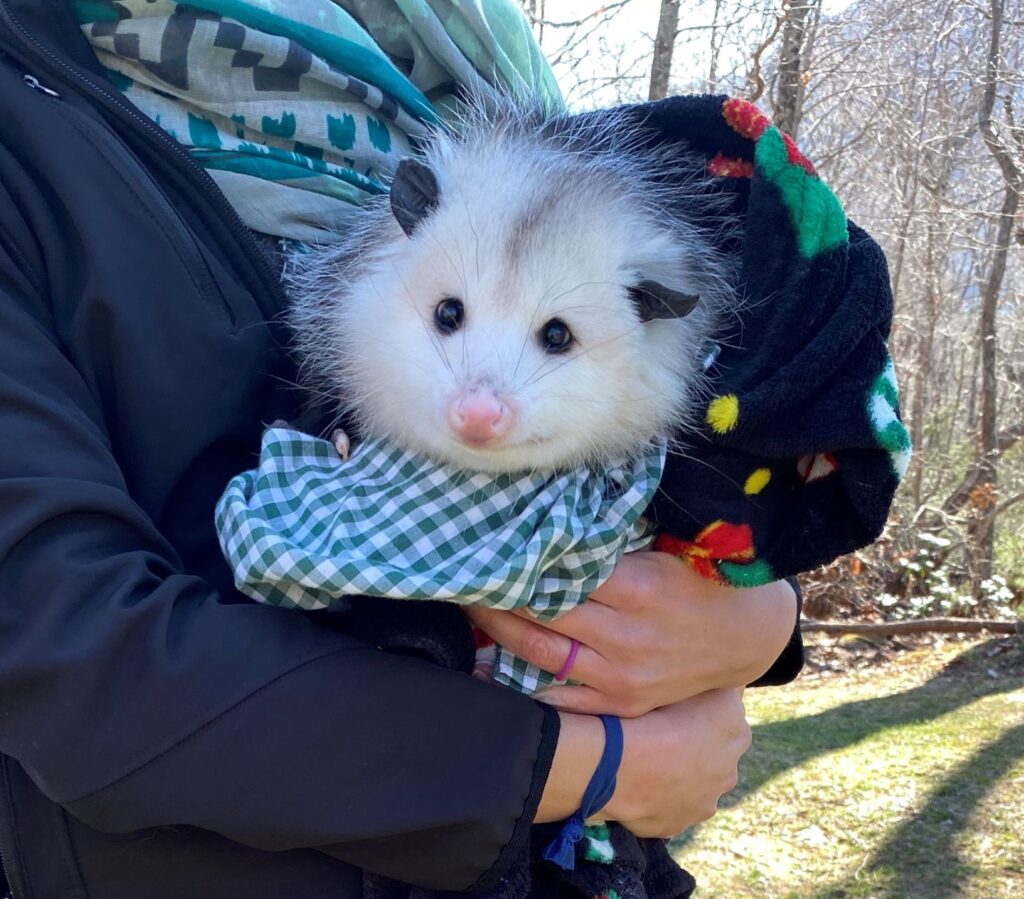
Valentine: Virginia Opossum
The rumors are true – I am the only marsupial species in North America! I may look scary to you, but I’m actually very important to the environment. I can eat other creatures that you might not want around, like ticks and venemous snakes (although here in the discovery den we prefer blueberries and grapes). If you don’t see me climbing around my enclosure I’m probably taking a nap since like my wild cousins, I’m nocturnal! You may see me teaching at a summer animal encounter program soon. But you won’t see me hanging by my tail… that’s a myth.
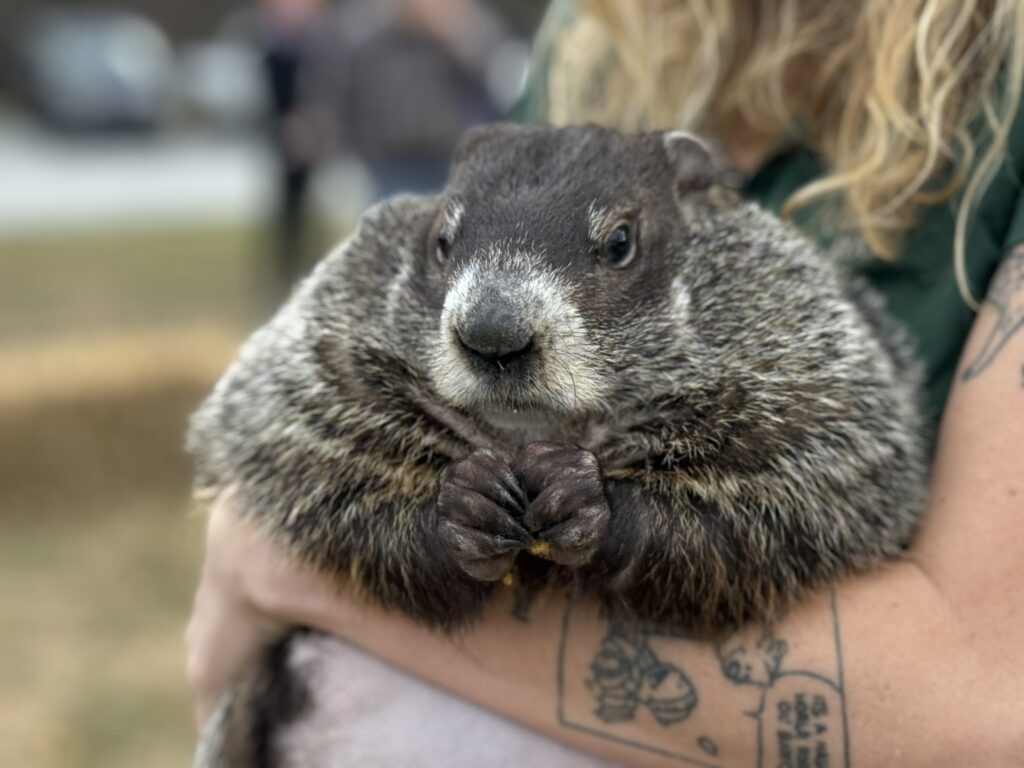
Tater: Groundhog
Come visit me in my exhibit behind the den. I’m the newest (and most mischevious) member of the Chimney Rock Ambassador squad. I’m one of the most common mammals you may encounter in the Park, so keep an eye out for my wild cousins. I like to spend my time climbing, napping, and snacking on my favorite foods like carrots and greens. You may spot my wild friends by roadways standing up to eat. This helps us keep an eye out for predators. Did you know we’re related to squirrels? In fact, we’re the largest ground squirrel around!




